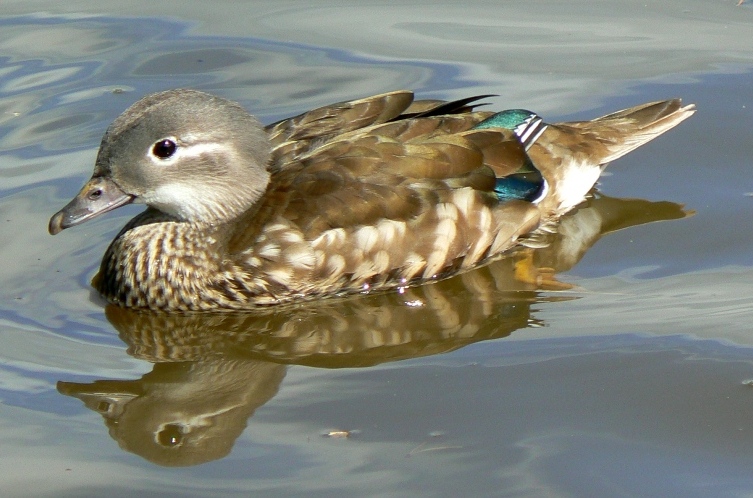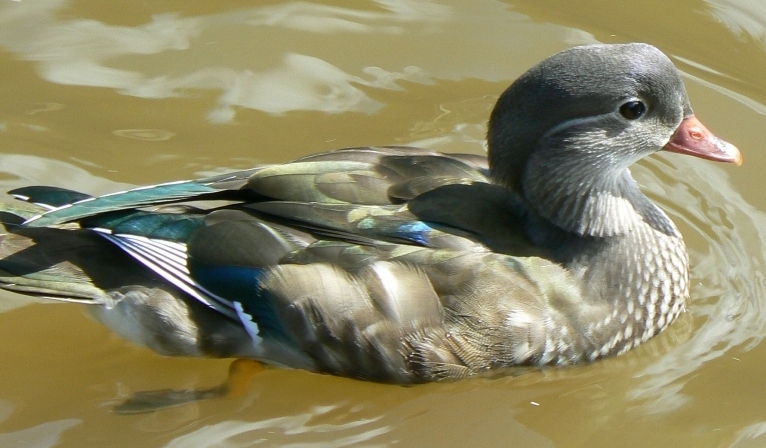
[012] Aix galericulata, Mandarin
Introduction
Aix galericulata, the Mandarin Duck, is a colourful duck that nests in trees. It is native to Japan and China but is now much more common in the Forest of Dean in Gloucestershire.
In context it is usually just called a Mandarin.
Taxonomy
Kingdom – Animals
Phylum – Chordates
Class – Aves (Birds)
Order – Anseriformes (Ducks, Geese and Swans)
Family – Anatidae (Ducks, Geese and Swans)
Genus – Aix
Scientific Name – Aix galericulata
It was originally named Anas galericulata. But originally all ducks, geese and swans were put into the single genus, Anas.
Apart from many species now extinct, there are only one or two species left in Anseriformes that are not Anatidae.
Name
Although the word ‘mandarin’ refers to a high government minister in China, its origins are from Portuguese and earlier Sanskrit. It has come to mean either a high minister not necessarily Chinese, or to anything Chinese.
Aix is an Ancient Greek word used by Aristotle to refer to an unknown diving bird. Galericulata is Latin for a wig, referring to the head and neck of the male bird.
Description
The Mandarin is a good example of sexual dimorphism. The male bird is very colourful with his orange whiskers and ‘sails’ on his back.


The female on her own would be considered a very attractive bird but her mostly grey plumage is overshadowed by the male.




They nest in cavities in trees near to water. Shortly after the ducklings hatch the mother flies to the ground and waits for them to jump to the ground. As with many birds they are imprinted on their mother and they follow her to nearby water.
Eclipse
The phenomenon of eclipse is a sort of protection found in many ducks that exhibit sexual dimorphism and in some other birds.
All birds moult either once or twice a year, growing a new set of feathers. Sexually dimorphic birds do this twice a year. The spring moult introduces the more colourful plumage needed for courtship and mating and the moult after breeding returns the birds to a less colourful appearance.
While the female looks the same all year. The male goes into ‘eclipse,’ and looks much more like the female in winter. The Mandarin does this and the male becomes almost identical to the female. He retains his red beak and some other minor differences.
Habitat
Because of their nesting habits the Mandarin Duck likes forest areas beside rivers and lakes. Mandarin used to be widespread in Eastern Asia but they have suffered because of the destruction of their forest habitat. Numbers in Russia and China are now very low but Japan may still have 5 000 pairs. Asian populations are migratory.
A feral population has established in Britain, escaping somewhere from collections, and there are probably more Mandarin in Britain now than in China. Other populations are developing in Ireland, Berlin and some places in the USA.
Other Notes
I see Mandarin often when I visit Cannop Ponds within the Forest of Dean, which form a perfect habitat for the species, where they can nest in the forest. They are often as tame as Mallards and will allow close approach as they rest at the edges of lakes. When people feed the ducks, Mandarin will join the melee of Mallard, Coots and gulls.
They will even approach the bird feeders, which are not really there for ducks.

In the culture of China, Japan and Korea, a pair of Mandarin represent a loving couple or a happily married pair.


See also
The only other Aix species is Aix sponsa, the equally colourful American Wood Duck, but you won’t see those in Britain. You will, of course see several other ducks and some geese and swans, and lots more Birds.
